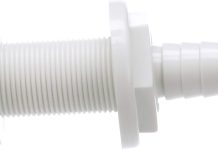Curious minds often wonder if it’s wise to leave inflatables up in the rain. We can all relate to those moments of uncertainty when dark clouds roll in, threatening our beloved outdoor decorations. Will they withstand the downpour, or will they be left deflated and forlorn? In this article, we’ll explore the dilemma of whether or not to brave the storm and keep those inflatables standing tall, or to take shelter and protect our bouncy companions. Join us as we uncover the truth behind this common conundrum.
Impact of Rain on Inflatables
Rain can have several effects on inflatables, including water damage, increased weight, and safety concerns. It is important to understand the potential consequences before deciding whether to leave your inflatables up in the rain.
Water Damage
One of the primary concerns when leaving inflatables up in the rain is the risk of water damage. Rainwater can seep into the fabric of the inflatables, causing structural issues and weakening the material over time. This can lead to tears, leaks, and ultimately, the need for costly repairs or replacements.
Weight
Another factor to consider is the increased weight of the inflatables when they are exposed to rain. As the fabric absorbs water, it becomes heavier, putting additional strain on the inflatable’s supports and potentially compromising its stability. This can pose safety risks for those using the inflatables and increase the likelihood of accidents or injuries.
Safety Concerns
Leaving inflatables up in the rain can also present safety concerns. Wet surfaces can become slippery, making it easier for individuals to slip and fall while using the inflatables. In addition, the added weight from the rainwater can affect the stability and balance of the inflatable, increasing the risk of tipping over or collapsing.
Factors to Consider Before Leaving Inflatables Up in the Rain
Before making a decision about leaving inflatables up in the rain, there are several factors to consider. These include the quality of the inflatable, the duration of the rain, the severity of the weather conditions, and the method of inflation.
Quality of the Inflatable
The quality of the inflatable plays a significant role in determining its ability to withstand rain. Higher-quality inflatables often have better waterproofing measures and are constructed from more durable materials, making them more resilient to water damage. It is important to assess the quality of your inflatables before deciding whether to leave them up in the rain.
Duration of the Rain
The duration of the rain is an important consideration when determining whether to leave inflatables up. Short periods of light rain may have minimal impact on the inflatables, while longer durations of heavy rain can increase the risk of water damage and stability issues. It is essential to monitor weather forecasts and make informed decisions based on the expected duration of the rain.
Severe Weather Conditions
In addition to the duration of the rain, the severity of the weather conditions should also be taken into account. If the forecast indicates strong winds, thunderstorms, or other potentially hazardous weather conditions, it is generally advisable to take down the inflatables to prevent damage and ensure the safety of users.
Inflation Method
The method used to inflate the inflatables can also influence their ability to withstand rain. Inflatables that are inflated electrically may have a higher risk of water damage, as the electrical components can be compromised by rainwater. On the other hand, inflatables that are manually inflated may have fewer vulnerabilities in this regard. Consider the inflation method and its potential impact on leaving the inflatables up in the rain.
Benefits of Leaving Inflatables Up in the Rain
Despite the potential risks, there are some benefits to leaving inflatables up in the rain. These include convenience, preservation of the shape, and prevention of mold and mildew.
Convenience
Leaving inflatables up in the rain can be convenient, especially if you frequently use them. It eliminates the need to continuously set up and take down the inflatables whenever rain is expected. This can save time and effort, particularly for individuals who have limited storage space or frequently host outdoor events.
Preservation of the Shape
Inflatables are designed to maintain their shape when properly inflated. Regularly deflating and inflating them can cause wear and tear over time, potentially affecting their aesthetic appeal and functionality. Leaving the inflatables up in the rain can help preserve their shape as the water weight can actually help maintain the inflated structure.
Preventing Mold and Mildew
By leaving inflatables up in the rain, you can prevent the growth of mold and mildew. Both mold and mildew thrive in moist environments and can quickly develop on damp fabric surfaces. By allowing the rainwater to wash away any accumulated dirt or debris and keep the inflatables clean, you can mitigate the risk of mold and mildew growth.
Drawbacks of Leaving Inflatables Up in the Rain
Though there are benefits, there are also drawbacks to leaving inflatables up in the rain. These include water damage, stability issues, and safety risks.
Water Damage
The risk of water damage cannot be overlooked when leaving inflatables up in the rain. As mentioned before, rainwater can seep into the fabric, causing structural weaknesses and potential tearing or leaks. This can result in costly repairs or replacements, making it important to weigh the benefit of convenience against the potential financial burden.
Stability Issues
The increased weight from rainwater absorption can compromise the stability of the inflatables. This can lead to issues such as tipping over or collapsing, posing safety risks to users. Additionally, the wet surface can become slippery, increasing the likelihood of individuals slipping and falling while playing on the inflatables.
Safety Risks
Leaving inflatables up in the rain can present safety risks for both children and adults. Wet surfaces can make it easier to slip and fall, potentially leading to injuries. The added weight from rainwater absorption can also affect the overall balance and stability of the inflatables, increasing the risk of accidents or collapses.
Tips for Protecting Inflatables During Rain
If you decide to leave your inflatables up in the rain, there are several precautionary measures you can take to protect them. These include choosing a sheltered location, using waterproof covers, taking safety precautions, and regularly inspecting and maintaining the inflatables.
Choosing a Sheltered Location
When setting up your inflatables, try to choose a location that offers some protection from the rain. This could be under a canopy or a tree, or near a building that provides some cover. By minimizing direct exposure to rainwater, you can reduce the risk of water damage and increase the lifespan of the inflatables.
Using Waterproof Covers
Another way to protect inflatables from rainwater is by using waterproof covers. These covers can be tailored to fit the specific dimensions of the inflatables and provide an additional layer of protection against moisture. Ensure that the covers are securely fastened to prevent water leakage and potential damage.
Taking Safety Precautions
To mitigate safety risks, it is important to take additional safety precautions when using inflatables during or after rain. This can include placing non-slip mats or rugs on the inflatable surface to minimize slipping, ensuring that individuals remove their shoes before entering, and closely monitoring the stability and overall condition of the inflatables.
Regular Inspection and Maintenance
Regularly inspecting and maintaining the inflatables is crucial for their longevity and safety. After rain, thoroughly inspect the inflatables for any signs of water damage, tears, or leaks. Promptly address any issues and ensure that the inflatables are properly cleaned and dried before storing them.
Alternatives to Leaving Inflatables Up in the Rain
If you are concerned about the potential risks and drawbacks of leaving inflatables up in the rain, there are alternative options to consider. These alternatives include deflating and storing the inflatables, using rainproof fabrics, or temporarily relocating them to a covered area.
Deflating and Storing
Deflating and storing inflatables during rainy periods is a popular alternative to leaving them up. This eliminates the risk of water damage, stability issues, and safety risks altogether. However, this option requires adequate storage space and regular set-up and takedown efforts, which may not be suitable for everyone.
Using Rainproof Fabrics
Some inflatable manufacturers offer rainproof fabric options for their products. These fabrics are designed to repel water, minimizing the risk of water damage. If you live in an area with frequent rain showers, investing in inflatables made with rainproof fabrics may be a worthwhile consideration.
Temporary Relocation
If you have the means to do so, temporarily relocating the inflatables to a covered area during rain can be a viable option. This could include moving them to a garage, a shed, or any other protected space. By providing shelter from the rain, you can effectively protect the inflatables from water damage and ensure their longevity.
Expert Opinions on Leaving Inflatables Up in the Rain
Opinions among safety experts and inflatable manufacturers regarding leaving inflatables up in the rain vary. It is important to consider multiple perspectives and gather information from reliable sources before making a decision.
Safety Experts
Some safety experts caution against leaving inflatables up in the rain, citing concerns about water damage and the potential for accidents or injuries. They emphasize the importance of regularly inspecting the inflatables and taking proactive measures to protect both children and adults from potential hazards.
Inflatable Manufacturers
Inflatable manufacturers may have differing opinions on leaving inflatables up in the rain. Some may recommend their products for outdoor use, rain included, while others may advise against it. It is advisable to consult the manufacturer’s guidelines and recommendations specific to the inflatables you own.
Case Studies: Leaving Inflatables Up in the Rain
To gain a better understanding of the potential outcomes, it can be helpful to review case studies of leaving inflatables up in the rain. These case studies can provide real-life examples of both positive outcomes and negative consequences.
Positive Outcomes
Some individuals have reported positive experiences with leaving inflatables up in the rain. They have found that the added weight of rainwater helps maintain the shape of the inflatables and that regular inspections and maintenance can mitigate water damage. However, it is important to note that these positive outcomes may be dependent on various factors, such as the quality of the inflatables and the duration and intensity of the rain.
Negative Consequences
On the other hand, there have also been instances where leaving inflatables up in the rain has led to negative consequences. These can include significant water damage, structural issues, and safety incidents. It is crucial to carefully consider these potential risks and assess whether the benefits outweigh the drawbacks in your specific circumstances.
Common Misconceptions About Leaving Inflatables Up in the Rain
There are several common misconceptions about leaving inflatables up in the rain that should be addressed to provide a comprehensive understanding of the topic.
Inflatables Are Waterproof
Contrary to popular belief, most inflatables are not fully waterproof. While they may be resistant to water to some extent, prolonged exposure to rain can result in water absorption and potential damage. It is important to recognize the limitations of inflatables when it comes to withstanding moisture.
Rain Cannot Cause Damage
Rainwater has the potential to cause significant damage to inflatables, especially if they are left up for long periods or during heavy rain. The continuous exposure to moisture can lead to structural weaknesses, tears, leaks, and other issues that may require repairs or replacements.
Inflatables Can Withstand All Weather Conditions
While inflatables are designed to withstand outdoor use, they are not impervious to all weather conditions. High winds, thunderstorms, hail, and other severe weather phenomena can cause significant damage to inflatables, making it important to exercise caution and consider the specific weather conditions before deciding whether to leave them up.
Final Verdict: Should You Leave Inflatables Up in the Rain?
After considering the various factors, benefits, drawbacks, and expert opinions, the decision of whether to leave inflatables up in the rain ultimately depends on your individual circumstances and risk tolerance.
If you prioritize convenience and are prepared to accept potential risks such as water damage, stability issues, and safety risks, leaving the inflatables up may be an option worth considering. However, it is crucial to take precautions such as selecting a sheltered location, using waterproof covers, and regularly inspecting the inflatables to minimize these risks.
On the other hand, if you prioritize the longevity and safety of your inflatables or live in an area with frequent rain or severe weather conditions, alternative options such as deflating and storing or using rainproof fabrics may be more suitable.
Ultimately, it is advisable to carefully weigh the potential benefits and drawbacks, consult with experts and manufacturers, and make an informed decision based on your specific circumstances, needs, and priorities.




































